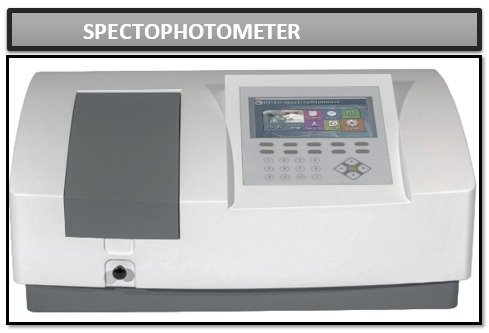Spectrophotometer, components, uses
Spectrophotometer, components, uses

Spectrophotometer, components, uses
what is spectrophotometer?
A spectrophotometer is a scientific instrument used to measure the intensity of light in relation to its wavelength or frequency.
Who invented spectrophotometer?
Many scientists over time have contributed to the development of spectrophotometry and spectrophotometers. The concept of measuring light absorption and its relationship to concentration was devised in the 18th and 19th centuries by Auguste Bier and Pierre Bouguer respectively. However, the specific invention of the spectrophotometer as a device can be attributed to Arnold O. Beckman.
Arnold O. Beckman, an American chemist and inventor, is credited with inventing the first practical spectrophotometer in the early 1940s. Beckman developed the Beckman DU (differential ultraviolet) spectrophotometer while working at the National Technical Laboratory (later known as Beckman Instruments, Inc.). His invention revolutionized spectrophotometry by introducing a reliable and accurate instrument for measuring the absorption of light.
The DU Beckman spectrophotometer used a quartz prism monochromator and photoelectric detector, enabling accurate measurement of light absorption at various wavelengths. This instrument is widely used in scientific research, pharmaceutical analysis and industrial laboratories, and plays an important role in the development of various fields of research.
Arnold O. Beckman's contributions to the field of spectrophotometry and his invention of the practical spectrophotometer laid the foundation for later advancements and applications in the field. His work also led to further innovations and improvements in spectrophotometer technology by other scientists and manufacturers in the following decades.
Spectrophotometr components:
A spectrophotometer consists of several main components that work together to measure the intensity of light at different wavelengths. These are the main components:
Light source:
The spectrophotometer has a stable and controllable light source that emits light at different wavelengths. Depending on the instrument, the light source can be a tungsten halogen lamp, a deuterium lamp, a xenon lamp or even an LED.
Monochromator or filters:
The light emitted from the source passes through a monochromator or series of filters. The purpose of these components is to isolate a specific wavelength or narrow range of wavelengths from a light source. Monochromators use prisms or diffraction gratings to scatter light into different wavelengths and select the one you want.
Sample container or cuvette:
The sample container, also known as a cuvette, is a transparent container that contains the sample to be analyzed. It is usually made of glass or plastic and is designed to allow light to pass through the sample. Cuvettes are available in different sizes and shapes for different sample volumes and types.
Detector:
The detector is responsible for measuring the intensity of the light after it passes through the sample. Various types of detectors can be used in spectrophotometers, including photodiodes, photomultipliers (PMTs), or charge-coupled devices (CCDs). These detectors convert light energy into an electrical signal that can be measured and analyzed.
Signal processor:
The electrical signal from the detector is processed by a signal processor. This component amplifies and converts the analog signal into a digital format that can be further analyzed and displayed.
Display and Controls:
Spectrophotometers have a user interface with a display screen and controls for setting parameters, selecting wavelengths, and performing other operations. The display allows users to check measurements and interact with the instrument.
Data output:
Spectrophotometers can be equipped with a variety of data output options for logging and analyzing results. This can be a built-in printer, USB or Ethernet ports to connect to a computer, or a wireless data connection.
These are the main components of a typical spectrophotometer. However, it is important to note that the specific design and functions may vary depending on the type and purpose of the tool.
Uses/Application:
Spectrophotometers have a wide variety of applications in various fields. Here are some common applications for spectrophotometers:
Quantitative Analysis of Chemicals:
Spectrophotometers are widely used in chemical laboratories for the quantitative analysis of chemicals in solution. They can determine the concentration of a substance by measuring the absorption of light at a certain wavelength. This is based on the principle of the Beer-Lambert law, which links absorption to concentration.
Biochemical analysis:
Spectrophotometers are widely used in biochemistry and molecular biology to analyze biomolecules such as proteins, nucleic acids and enzymes. They can measure the absorption or emission of light by these biomolecules, allowing researchers to study their properties, structure and interactions.
Pharmaceutical analyses:
In the pharmaceutical industry, spectrophotometers are used for quality control and drug analysis. They can determine the concentration and purity of active pharmaceutical ingredients (APIs) and detect impurities or degradation products in pharmaceutical products.
Environmental monitoring:
Spectrophotometers are used in environmental science to monitor water quality, air pollution, and soil. They can measure parameters such as turbidity, pH, dissolved oxygen and various contaminants by analyzing the absorption or fluorescence characteristics of samples.
Analysis of food and drink:
Spectrophotometers are used in the food and beverage industry for quality control and analysis. They can measure parameters such as color, clarity and concentration of additives, vitamins and minerals in food and beverages.
Characterization of materials:
Spectrophotometers are used in materials science to characterize the optical properties of materials. They can measure the reflection, transmission or absorption of light in materials, which helps to study their composition, structure and optical properties.
Clinical and Medical Applications:
Spectrophotometers are used in clinical and medical laboratories for diagnostic purposes. They can measure the concentration of various biomarkers, enzymes and metabolites in blood, urine or other biological samples.
Forensic Analysis:
Spectrophotometers are used in forensics to analyze evidence such as fibers, paint, ink, and drugs. They can determine the composition and characteristics of these materials and assist in criminal investigations.
These are just a few examples of the many applications of spectrophotometers. Their versatility and accuracy make them indispensable tools in scientific research, quality control and analysis in many industries.
What's Your Reaction?





















